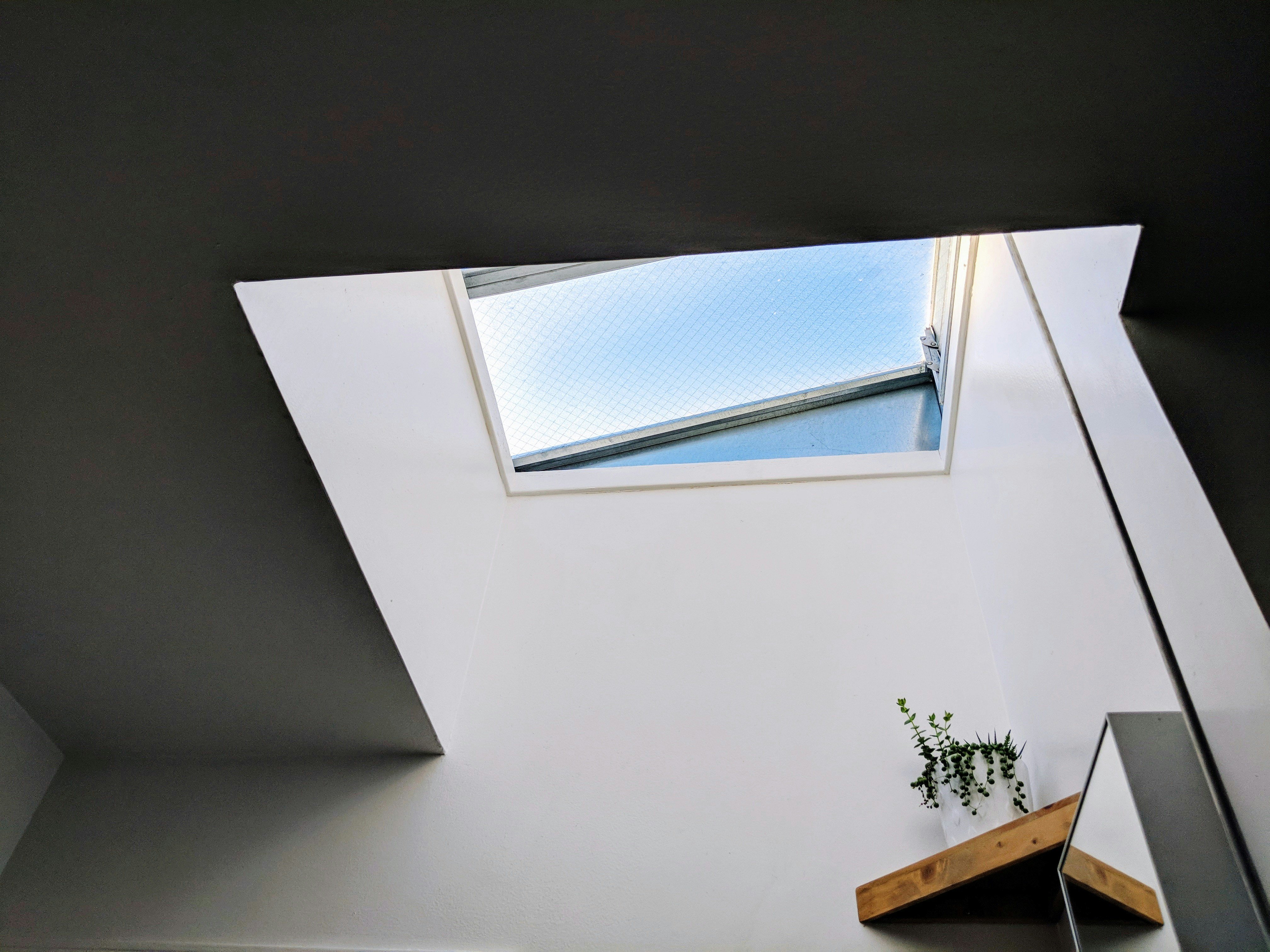Can I Add Skylights to My Existing Roof?
June , 2025 | 6 min. read

If you’ve ever stared longingly at Pinterest-worthy kitchens or sun-drenched bathrooms and thought, “How can I get that much natural light in here without knocking down walls?”, you’re not alone. Enter: skylights.
At RoofCrafters, we know that skylights are a dreamy way to flood your home with sunlight, reduce electricity bills, and even boost your home’s resale value. But if your home wasn’t built with skylights in the first place, you’re probably wondering if you can add them to your existing roof.
Spoiler alert: Yes, you can add skylights to an existing roof. But (and it’s a pretty important but), there are some key considerations that could make or break your skylight dreams, or your roof. Let’s dig in and learn more together, shall we?
Adding Skylights Isn’t Always as Simple as Cutting a Hole in Your Roof

Sure, it sounds simple: cut a hole, drop in a window, enjoy the sunshine. In reality? Skylight installation involves engineering, roofing, waterproofing, and sometimes even permits. Your current roof type, age, slope, and structure all play major roles in what’s possible and what’s not.
Here are some questions to ask yourself before you go full sunbeam-mode:
- What type of roof do you have?
- Is the attic or ceiling space easily accessible?
- Are there trusses, wires, or ductwork in the way?
- Has your roof been recently replaced, or is it near the end of its life?
These factors help determine whether skylights are feasible or if they’d require serious renovation.
What to Consider Before Installing Skylights

Here’s a breakdown of the biggest elements that can affect your ability to install skylights in an existing roof:
Your Roof’s Framing Style
Roofs are framed in one of two ways: stick-framed or truss-framed.
- Stick-framed roofs are built using individual rafters spaced apart, making it easier to cut between them and install skylights.
- Truss-framed roofs use prefabricated triangular units, which can’t be easily altered without compromising the structural integrity of the roof.
If your roof is stick-framed, you’re in luck. You’ll have more freedom to place skylights where you want. If it’s truss-framed, installation is still possible, but it may be limited to specific spots or require custom skylights that fit precisely between trusses.
Roof Slope and Direction
Skylights can be installed on most roof slopes, but the pitch matters for both water drainage and sunlight exposure. A low-slope or flat roof may require special curbs or flashing to prevent leaks. Also, think about direction:
- North-facing skylights offer consistent, indirect light.
- South-facing skylights bring in bright light and warmth (great for colder climates, not always ideal in hotter ones).
- East- and west-facing skylights deliver strong light at sunrise or sunset. Beautiful, but potentially harsh or hot.
Roofing Material
Some materials are more skylight-friendly than others:
- Asphalt shingles (the most common residential roofing material) are relatively easy to cut and reseal around.
- Metal roofs require extra care for flashing and sealing.
- Tile roofs can be trickier and more expensive due to their fragility.
- Flat roofs may need curb-mounted skylights to prevent water pooling.
No matter the material, it’s crucial to get the waterproofing and flashing right. Otherwise, you could be dealing with costly leaks down the line.
Age and Condition of Your Roof
If your roof is approaching the end of its lifespan (say, 15-20 years for asphalt shingles), it might be smarter to wait until your next roof replacement to install skylights. Adding them now could mean disturbing old or brittle materials, and then you’d likely need to redo everything again in a few years.
On the flip side, if your roof is in great shape and still has a decade or more of life left, adding skylights could be a worthwhile upgrade.
How to Safely Add Skylights to an Existing Roof

If you’ve gotten this far and still feel confident that skylights are right for your home, here’s what RoofCrafters recommends:
Step 1: Consult a Professional Roofing Contractor (Seriously)
This isn’t a DIY weekend project unless you moonlight as a roofer. An experienced roofing contractor can assess:
- Your roof’s structure and materials
- The best placement for skylights
- Any obstacles in your attic or ceiling
- Local building codes and permit requirements
They’ll also ensure your skylight is installed with proper flashing and waterproofing, thereby reducing the risk of leaks.
Step 2: Choose the Right Type of Skylight
There are several skylight options, each with their own benefits:
- Fixed skylights: Don’t open, and are great for rooms that don’t need extra ventilation.
- Ventilating skylights: Open manually or electronically, perfect for kitchens and bathrooms.
- Tubular skylights: Use reflective tubes to channel sunlight into tight or windowless spaces, and are ideal if your roof or attic can’t accommodate a traditional skylight.
Depending on your budget and lighting needs, your roofer can help you choose the right style and size.
Step 3: Plan for Weatherproofing and Insulation
A good skylight is more than just a pretty view. It needs:
- Flashing kit that’s designed specifically for your roofing material
- Insulated glass to reduce heat gain/loss
- UV coatings to protect your furniture and flooring from sun damage
And if you’re in a region prone to storms or hurricanes (hey, Florida), look for impact-rated skylights to help protect your home.
Bonus: Pros and Cons of Adding Skylights
Let’s weigh the ups and downs so you can make an informed decision:
Pros:
- Brings in natural light and fresh air
- Makes rooms feel larger and more open
- Can improve your mood and reduce energy bills
- Increases home value and aesthetic appeal
Cons:
- Risk of leaks if improperly installed
- Can add heat gain or loss if not well insulated
- Costs vary, typically $1,000 to $3,000+ per skylight
- May require permits or structural changes
Installing Skylights: Is It Worth It?
If your roof is in good condition, your home could benefit from more sunlight, and you’re working with a qualified contractor, adding skylights is absolutely doable, and often worth it!
They’re not just a cosmetic upgrade; they can improve your quality of life, brighten gloomy rooms, and even help you feel more connected to nature without setting foot outside. (And let’s be honest, who doesn’t want to stare at the stars from bed?)
Just be sure to get an expert opinion first. Cutting into your roof is a big deal, and doing it right the first time will save you thousands in repairs later. And when in doubt? Hit that “Schedule an Inspection” button down below, and a professional here at RoofCrafters will be happy to give you their honest opinion!
My name is Cassie, and I’m the Content Manager here at RoofCrafters. I was born and raised in Chicago, Illinois, and made my way out to Florida post-college graduation. I’m incredibly passionate about writing and creating valuable content that helps others with the collaboration of my marketing team. When I’m not working, I enjoy shopping (a little too much), spending time at the beach, and reading!




